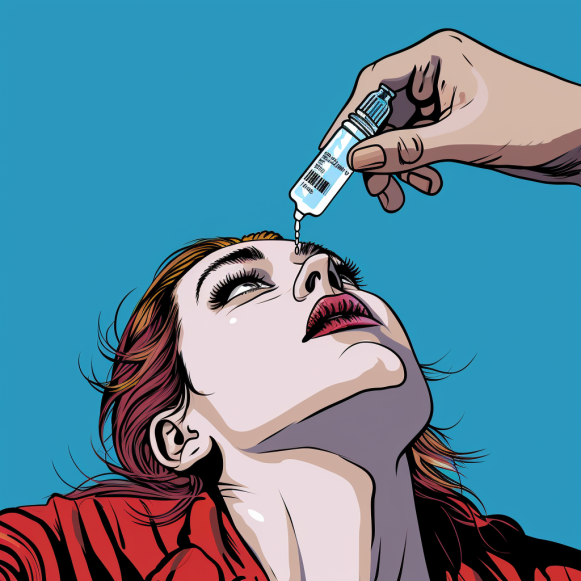Death rates for people under 40 have skyrocketed. Blame fentanyl

According to a new Stateline analysis, Americans under the age of 40 were relatively unaffected by the COVID-19 pandemic but were victims of another killer: accidental drug overdose deaths.
Death rates in this age group increased by nearly a third in 2021 compared to 2018, and were still 21% higher last year.
COVID-19 was a minor contributor, accounting for approximately 23,000 deaths between 2018 and 2022 in the age group, which includes the millennial generation (born beginning in the early 1980s), Generation Z (born beginning in the late 1990s), and children. According to a Stateline analysis of federal Centers for Disease Control and Prevention data, vehicle accidents, suicide (about 96,000), and gun homicide (about 65,000) all took a cumulative toll from 2018 to 2022.
Overdose deaths, on the other hand, claimed nearly 177,000 lives during that time period.
Accidental overdose has surpassed suicide in nine states and vehicle accidents in five others to become the leading cause of death in 13 states for people under the age of 40; it is now the leading cause in 37 states. The only other change was in Mississippi, where homicide surpassed car accidents as the leading cause of death. Overdose was the leading cause of death for young people in 40 states and the District of Columbia.
States are responding to the rising death toll with “harm reduction” strategies such as warning of the new danger of recreational drugs laced with lethal fentanyl, training and equipping people to respond to overdoses when they see them, and even considering controversial supervised drug use sites to keep addicts safe.
According to Daliah Heller, vice president of drug use initiatives at Vital Strategies, an international advocacy group that works to strengthen public health, a “fourth great wave” of accidental overdose deaths caused by drugs spiked with powerful fentanyl is now washing over young America.
From 2000 to 2016, prescription opioids caused a surge in drug dependency, but when supply dwindled due to crackdowns, users turned to heroin, synthetic opioids, and finally fentanyl, which is 50 times more potent than heroin and easier to obtain in the pandemic, according to Heller.
‘Very common’ encounter
Jonathan Diehl of Silver Spring, Maryland, died in 2019 at the age of 28 after consuming heroin that was likely laced with fentanyl, according to his mother, Cristina Rabadán-Diehl. Jonathan Diehl had a degree in construction management and was about to start a promising new job in home heating and air conditioning when he died, according to his mother.
“I think Jonathan’s trajectory was very common,” said Rabadán-Diehl, who now works as a substance use disorder adviser. “He began with opioid pills, and when the government began limiting prescriptions, he, like millions and millions of other Americans, transitioned into the illegal market.” And then there was fentanyl.”
A new wave of overdose deaths, distinct from the first three, is being fueled by fentanyl finding its way into all types of recreational drugs, as well as pandemic isolation, which has led to more solitary drug use, according to Heller.
“Someone may believe they’re getting a Xanax [for anxiety], methamphetamine, or cocaine,” Heller said. “They have no prior experience with opioids, it’s not what they’re expecting, and they now have a much higher risk of overdose and death.”
Overdose deaths are generally classified as an accident or suicide by authorities based on individual investigations into the circumstances surrounding each death.
New Mexico, which has surpassed West Virginia and Mississippi to have the highest death rate in the country for people under 40 — about 188 deaths per 100,000, up 43% since 2018 — is one of the states struggling the most with young people deaths, which are mostly caused by accidental overdoses.
West Virginia (170 deaths per 100,000), Louisiana and Mississippi (164), and Alaska (163) also have high death rates for this age group.
In New Mexico, where accidental overdoses surpassed suicide as the leading cause of death for people under 40 in 2022, rising 90% to 394 deaths since 2018, the overdose problem has primarily been concentrated in impoverished rural areas such as Rio Arriba County on the Colorado border.
Tara Lujan, a Democrat from that county, sponsored harm reduction legislation that was signed into law last year. It is similar to laws in many other states that include widespread distribution of naloxone to reverse overdoses, legalized testing equipment for lethal additives such as fentanyl, and good Samaritan laws that allow friends to report overdoses without facing legal ramifications for their own drug use.
Lujan hopes to reintroduce legislation that would establish so-called overdose prevention centers or harm reduction centers where drugs could be used in a supervised and safe setting. This year, the bill died in committee after Republicans dubbed it “state-sponsored drug dens.”
“It’s all issues that existed before the pandemic, but the pandemic threw everything off the rails,” Lujan explained. “My committee meetings have been jam-packed with family members saying, ‘We know they won’t quit on their own, but we don’t want them to die.'”
Only two such facilities, run by advocates, are in operation; the sites claim some success in reversing overdoses. However, federal law enforcement officials have threatened to shut them down in the absence of a specific state mandate, citing a federal law that prohibits operations that allow illegal drug use on-site.
In California, Democratic Gov. Gavin Newsom vetoed legislation last year that would have allowed jurisdictions to open safe injection sites, claiming that it “could induce a world of unintended consequences” in cities like Los Angeles, San Francisco, and Oakland.
“Worsening drug consumption challenges in these areas is not a risk we can take,” Newsom said in his veto message.
So far, Rhode Island is the only state to pass legislation allowing supervised drug-use sites as a pilot project in 2021, but no centers have opened. New legislation introduced this year would extend the pilot project’s expiration date from 2024 to 2026.
This year, bills on the same topic of supervised drug-use sites were considered in Colorado, Illinois, and New York but did not pass.
A Massachusetts bill would have required all state university dorm assistants to have naloxone training to reverse overdoses, indicating the impact on young people, but it stalled.
New Hampshire is one of several states testing vans that go to known drug-use areas and provide overdose prevention supplies and advice.
Death rate disparities
In 2022, Hawaii (78), Massachusetts and Rhode Island (79), and Utah and New Jersey (80) had the lowest death rates for young people. Massachusetts and New Jersey were the only states to see decreases in overall deaths for people under 40 since 2018, as well as decreases in overdose deaths, despite the fact that overdose remained the leading cause of death for young people in both states.
Accidental overdoses dominated the increase in deaths among people under the age of 40 across racial and urban-rural divides, but there are many disparities. The increase in young overdose death rates was 154% for Black Americans, 122% for Hispanic residents, and 37% for white residents, despite the fact that white residents had the highest increase.
Overdose death rates increased by 70% in major cities and 64% in rural areas, the highest increases in either area for any cause of death.
According to a federal National Center for Health Statistics data brief published last year, overdose death rates are higher for men and slowed in 2017, but picked up again after 2018 and will skyrocket in the pandemic until 2021.






